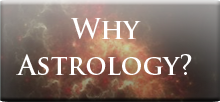The Uranian system of astrology, also known as the Hamburg School of Astrology, had its origins in the early part of the twentieth century. Alfred Witte (1878-1943), the founder of the system, was a renowned astrologer in Germany as well as a surveyor. He, along with his student and colleague, Friedrich Sieggrun (1877-1951) were members of the famed Kepler Circle. During World War 1, Witte tried to use the prevailing astrological methods of his day to time battles. He found these methods to be quite lacking and it was during this time that Witte developed his revolutionary way of looking at astrology. After the war, he introduced these ideas to his contemporaries in the Kepler Circle. Witte’s Uranian astrology is differentiated from other schools of Western astrology by a variety of factors including the use of dials, the cardinal axis, hard aspects, midpoints and symmetry, the use of eight hypothetical planets, and its concentration on six personal points and their houses. There is a movement afoot, led by Gary Christen, David Beazley and myself to rename the system Symmetrical Astrology, a term which very aptly describes the basic principle of the system.
Witte postulated that the character and destiny of a person is not solely determined by the aspects between the planets but is seen primarily through the symmetry of the planets. Planets are in symmetry when their arc openings are equal. One of the main tenets of the system states that planets that have equal differences (arc openings) also have equal midpoints and equal sums. These completed symmetrical planetary arrangements are called planetary pictures. A planetary picture may be expressed in the following ways: Planet A + Planet B- Planet C = Planet D; Planet A + Planet B = Planet C + Planet D; Planet A – Planet C = Planet D – Planet B; and, finally, Planet A + Planet B divided by 2 (midpoint of A & B) = Planet C + Planet D divided by 2 (midpoint of C & D).
For example, Planet A, Mars is at 13 degrees of Gemini, Planet B, Jupiter is at 19 degrees Sagittarius, Planet C, Venus is at 25 degrees of Taurus and Planet D, Saturn is at 7 degrees Capricorn. Except for a wide opposition between Mars and Jupiter, these planets would at first seem to be unrelated. However, they actually work in tandem because of their symmetrical relationship. Using whole circle notation we see that:
A + B – C = D
Mars (73) + Jupiter (259) – Venus (55 degrees) = Saturn (277)
A + B = C + D
73 + 259 = 55 + 277
A – C = D – B
73 – 55 = 277 – 259
A + B div by 2 = C + D div by 2
73 + 259 div 2 = 55 + 277 div by 2
The system also investigates sensitive points, which are expressed in a similar fashion to Arabic Parts, i. e. A + B – C. When these points are completed by a natal, transiting or solar arc directed planet, the completed symmetrical picture is formed. Though many people believe that the system uses thousands of points, the fact of the matter is that the experienced practitioner looks only for these completed symmetrical relationships.
These symmetrical relationships are most easily seen using a rotating dial. Most Uranian astrologers use both the 360-degree dial and the 90-degree dial. Some use dials of other harmonics as well, most notably, the 45 degree and the 22.5 degree dial. The 360 dial divides the zodiac into 12 30-degree segments according to sign. The 90 degree dial divides the circle by four so that all of the cardinal signs are placed in the first 30 degrees of the dial, the fixed signs are posited in the second 30 degree segment and the mutable signs are found in the last 30 degrees of the dial.
On a 360 degree dial, there are arrows marking 0 degrees of the cardinal signs and a marking, usually a large dot, indicating 15 degrees of each of the fixed signs. These eight points are collectively referred to as the Cardinal Axis or the Eight-Armed Cross. In essence, these markings divide the 360-degree circle by eight. These special markings, therefore, also indicate the hard aspect series, i.e. the opposition, square, semi-square, sesquiquadrate. There are additional markings on most 360 dials as well as a marking for each segment of 22.5 degrees (16th harmonic aspect). The soft aspects, semi-sextile, sextile, trine and quincunx are also easily viewed on the dial by using the sign boundaries. Therefore, the dial is not only a tool for examining symmetry but it is a wonderful aspectarian as well.
Uranian astrologers use the cardinal axis or eight armed cross to represent the world at large. With the pointer on the Cardinal Axis, the astrologer looks for planets symmetrically arranged around the axis or in aspect to the axis. When the midpoint of two planets falls around the 0 Cancer/0 Capricorn axis, they are said to be in antiscia. The use of antiscia is not unique to Uranian astrology but finding antiscia using the 360-degree dial is. Contra-antiscia, symmetry around the 0 Aries/0 Libra axis, is also easily visible using the dial. But, Uranians take antiscia even further and also examine the symmetry or midpoints of planets around 15 degrees of Leo/Aquarius and Taurus/Scorpio. Not only is this technique useful to describe world events on a particular day or place, but we can also use the position of the planets at birth relative to this eight-armed cross to describe the unique connection of the individual with the world at large. After all, the planets are constantly moving in relationship to one another and thereby define the course of human history in the broadest sense as well as in every day ways. How a person fits into this universal, ever-changing rhythm is quite elegantly defined in how the planets were arranged around the cardinal axis at their specific time and place of birth.
In fact, the Cardinal Axis is the first of the “personal points” of the Uranian system. It is the outer personal point that represents our connection to the world in general. The second “outer” personal point is the Ascendant. This point describes how a person relates in their immediate surroundings and it rules the “place.” The third outer personal point is the Moon’s Node. Through this point, we may examine a person’s intimate connections, those that are of a karmic variety.
The next three personal points are considered “inner” personal points. The first is the Sun, representing the will and ego of the individual. The Sun also rules the “day.” The Moon is the second inner personal point, representing the emotions of the individual. The Moon also rules the “hour.” Finally, the last of the inner personal points is the MC. The MC represents the person’s unique individuality, soul or spirit of the individual. It rules the moment or “minute.”
One popular misconception about Uranian astrologers is that they don’t use houses. In fact, the seasoned Uranian astrologer uses six house systems for each of the personal points. The Meridian House system is probably the most important of the six since it represents the native’s point of you. This house system is divided along the equator rather than the ecliptic and, therefore, the houses are more or less equal in size. The First house of the Meridian system is also known as the Equatorial Ascendant and describes how the person sees himself. The point known as the Ascendant may actually fall in the 12th house of the Meridian house system.
The Earth Horoscope or houses of the Earth have 0 Cancer as the Tenth house or MC and 0 Libra on the First house. Therefore, a person with Sun in Sagittarius would have the Sun in the Third house of the Earth. The Earth Horoscope represents the earth and the generality; it is how the person operates in the world.
The Ascendant is the First house of the Ascendant Horoscope. Subsequent houses occur at equal 30-degree intervals. The Ascendant Horoscope represents the person’s connection to their environment and how they operate in a specific locale.
The Sun Horoscope is found by using the Sun as the Fourth house cusp. Subsequent houses occur at equal 30-degree intervals. The Sun Horoscope represents the physical body as well as the relationship to the father.
The Moon Horoscope is found by using the Moon as the Tenth house cusp. Subsequent houses occur at equal 30-degree intervals. The Moon Horoscope describes the emotional life of the individual as well as the Mother.
The Node Horoscope is found by using the Node as the First house cusp. Subsequent houses occur at equal 30-degree intervals. The Node Horoscope represents the intimate or karmic connections.
The hypothetical or “trans-neptunian” planets are probably the most controversial aspect of the system. However, after the discovery of Neptune, it was very much in fashion for astronomers to postulate the orbits and existence of new planets. The orbits of the planets were derived by looking back through events and charts and filling in the missing threads. The first four planets were proposed by Witte alone and the second four were proposed together with Sieggrun. The planets are: Cupido, Hades, Zeus, Kronos, Apollon, Admetos, Vulcanus and Poseidon. The fastest of the eight, Cupido, moves slightly more than one degree per year. The slowest, Poseidon, moves about ½ degree per year.
Ð (Cupido) rules marriage, family, groups, society, the arts, cliques and clannishness.
Ñ (Hades) represents poverty, suffering, garbage, filth, secrets, loneliness, decomposition, antiquity, service in the highest or lowest sense.
Ñ (Zeus) signifies fire, weapons, the military, machinery, conception, creativity, purposeful action, drive and obsessions.
Ó (Kronos) rules authority, government, rulers, nobility, mastery, independence, anything about average, superiority.
Ô (Apollon) symbolizes great success, expansion, multitudes or the many, open spaces, peace, commerce and trade, science, great intellect, the “big picture” as opposed to the details.
Õ (Admetos) represents the beginning and the end (the wheel of life), endurance, depth, focus, specialization, the few, raw materials, real estate, standstill, death and blockages.
Ö (Vulcanus) has to do with great strength, power, might forces, fate, destiny, control issues, violent eruptions.
× (Poseidon) symbolizes enlightenment and wisdom, the life force, spirituality, light, universality, mediumistic, visionary, intellectual.
Reference: NCGR Journal, Winter 1991-1992. National Council for Geocosmic Research. Articles by Wayne Booher, Gary Christen and Arlene Nimark.


